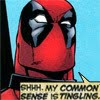I am combining Ticket to Ride and Ticket to Ride: Europe in this entry since they are similar in most ways.
Ticket to Ride's objective is to create connecting chains of railroad from city to city to get points. Each connecting railroad track gives the player points based of of its length. The longer the track the more points you get. Adding to this is the objective cards which reward the player if they create a long chain of railroad to two cities. Again based on the length between the cities the more points you can gain. In order to place down tracks, the players uses cards with different color trains on them and match color the the rails shown on the board. The longer the rail is the more cards of that color you will need. Example: There is a green 4 rail track I want to place, that means I need 4 green cards to obtain that track. The play continues until a person has only 2 trains left. Everyone else gets a last turn and the game is over. The winner is the person with the most points.
Ticket to Ride: Europe has the game play above with a few addition features. First is that each player a has 3 stations. These station allow to player to use another persons rail to complete a circuit. However, doing this means less points as each unused station is worth an number of points on the final score. The other feature is that of tunnels. Tunnels are special tracks that require you to first pay the cost then you draw a card for each track piece of the tunnel if a engine shows up then the tunnel "collapsed" and you fail to make that track. Example: The tunnel is 5 tracks long. I pay the five cost then I flip over cards from the draw pile. If I flip over a 5 cards and an engine doesn't appear then I successfully built the tunnel. But if I did flip over an engine I don not get that track.
The Ticket to Ride Series is another game I could recommend to the family, because of the ease of rules and simplicity of the gameplay. The price is about average for a board game of this type ($50 US). The quality of the art, pieces and gameplay is worth the price.
Wednesday, January 12, 2011
Thursday, January 6, 2011
Video Game Analysis
This the start of a new blog feature I'm going to do. I am going to play and give my thoughts on a video game. Is this a review? Yes and no, I will be telling you what I like and don't like about the game, but there won't be a rating at the conclusion. My hope is to talk about what did and didn't work about the design of the game. For games that are not downloads, I will do an initial impressions and another post after I complete it. The first game will be next week.
The game is: Poker Night at the Inventory.
The game is: Poker Night at the Inventory.
Wednesday, January 5, 2011
AGI: Dice Games Edition
3 reviews for in one shot. All of these games are fast fun games. First game is Dino Dice by Mayfair Games. This game is for any number of players and consist of the five colorful dice. Each side of the die is a different Dino silhouette. The gameplay is simple:
- Roll the dice. Look at results.
- Any matching numbers can be put together to create a herd. These give you bonus points.
- For every T-rex rolled, you have to remove one of your other dinos. (so 2 rexs = 2 less dinos)
- You can stay with this roll or reroll any number of your dice(minus the ones eaten by T-rexs) up to 2 more times.
- Add the face values currently rolled and add any herd bonuses.
- Once a person reaches or goes over 150 points, everyone else gets 1 more turn then the game stops.
- Person with the highest score wins.
Next up is Zombie Dice by Steve Jackson Games. Zombie Dice is similar to the Dino Dice in gameplay style. In this game, you play a zombie searching for fresh brains. The Game comes in a cup that holds 15 dice. The dice have 3 different symbols. Footsteps (The human ran away), Shotgun blast(you take damage), and a Brain (nom nom nom). The dice also have 3 different colors: Red, yellow, green. The color tells you the chance a of a shotgun blast showing up. Red has the highest chance and the green lowest chance. Each turn goes as follows:
- Randomly take out 3 dice from the dice cup and roll them.
- Place any brains to one side and shotgun blast to the other. Hold on to footsteps,
- Players can now choose to stop rolling or roll 3 more dice, by taking footsteps from previous roll and adding new dice up to 3.
- Players can continue to do this till he chooses to stop or till he has 3 shotgun blasts.
- If he gets 3 shotgun blasts his turn ends and he does not get any points he gained this round.
- The first person to get past 15 points signifies the ends of the game and everyone get one last roll to win.
Both games play quickly, and are easy to learn. Their price is also another great selling point, both games are under five dollars. If you don't have them, get them, seriously why are still reading this go and get them.
Subscribe to:
Comments (Atom)





